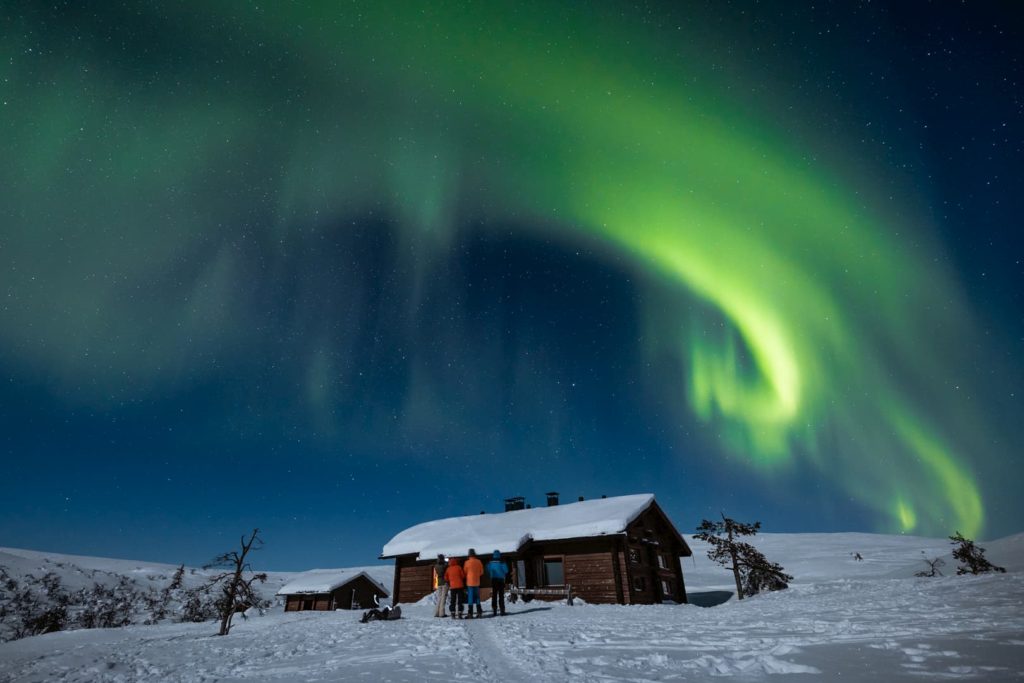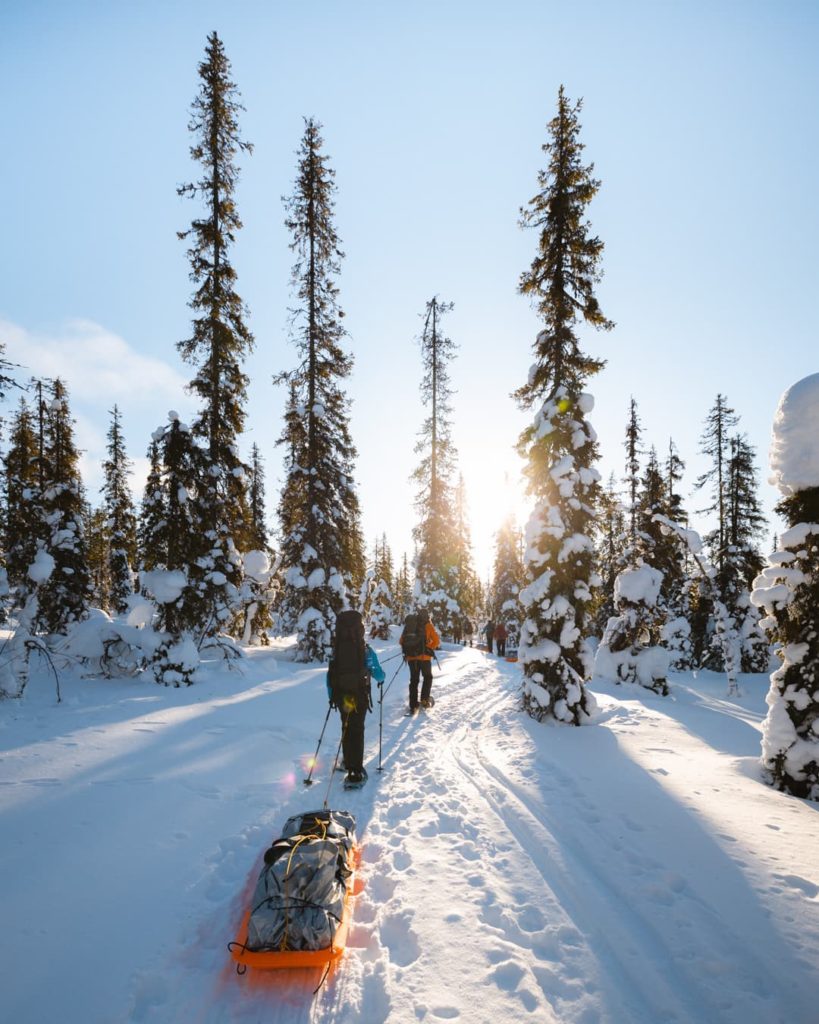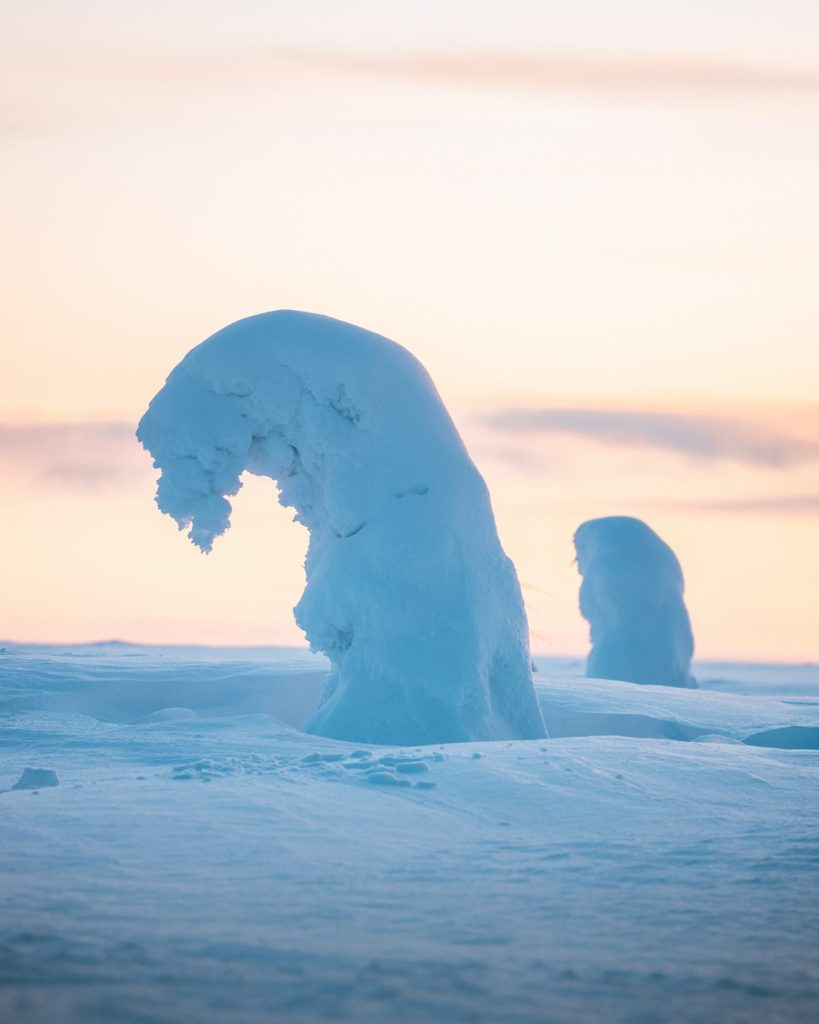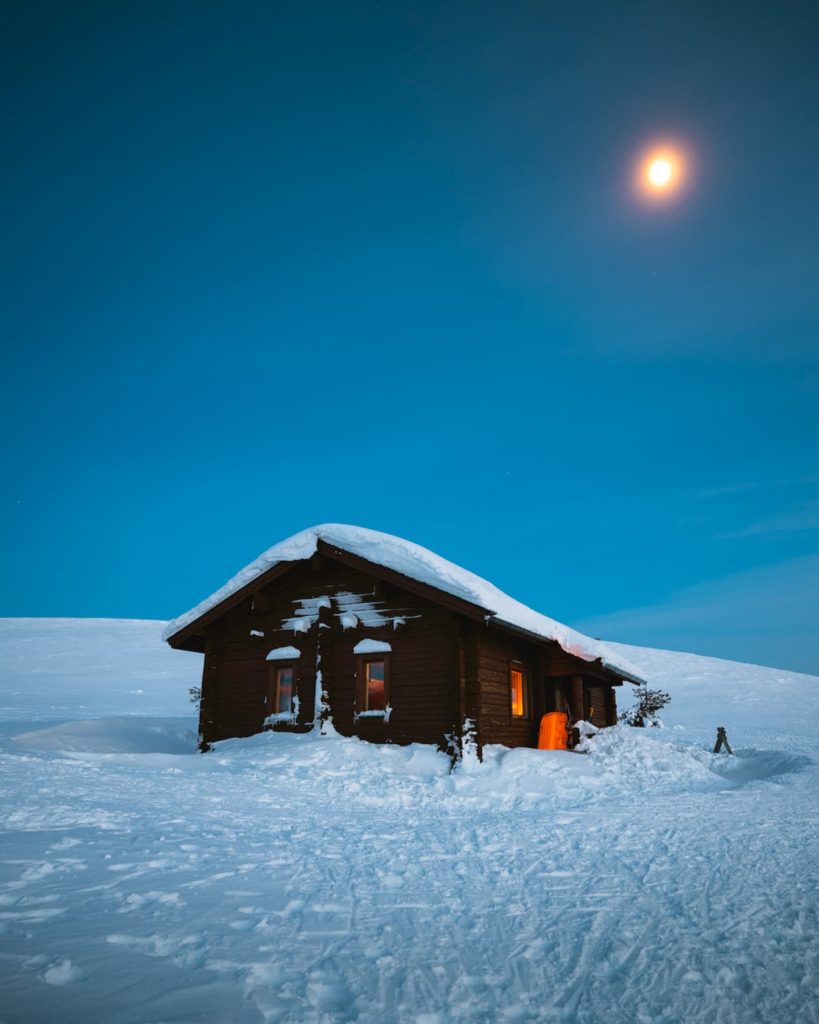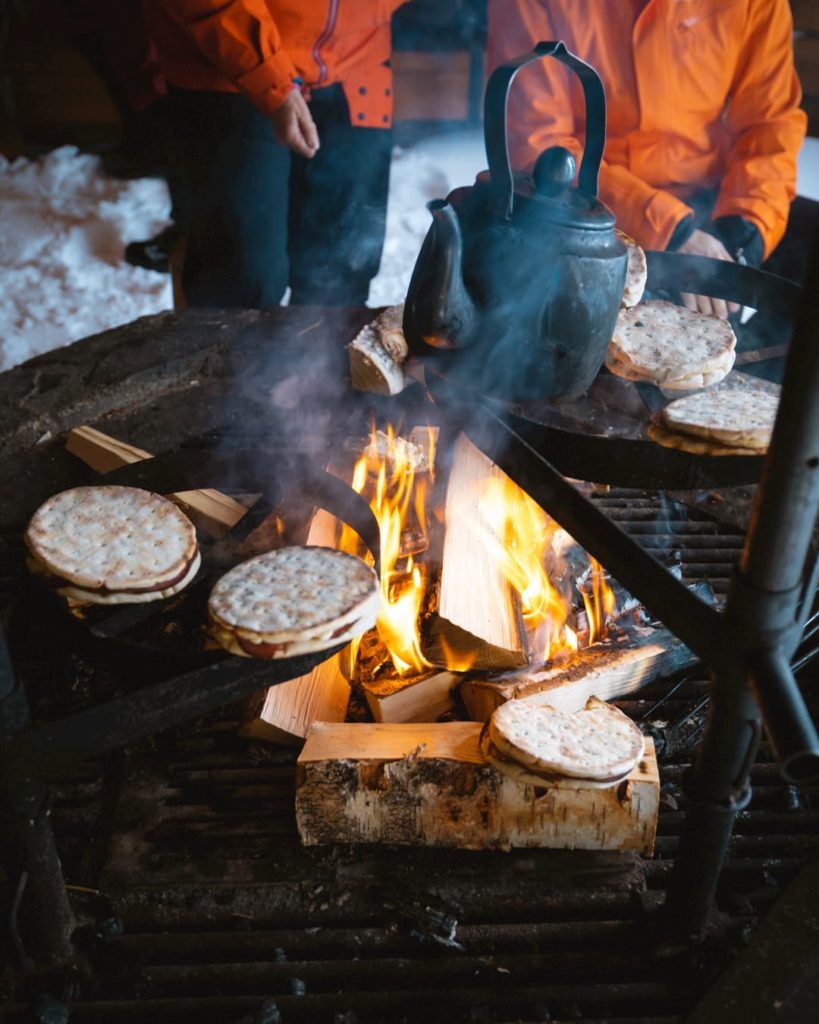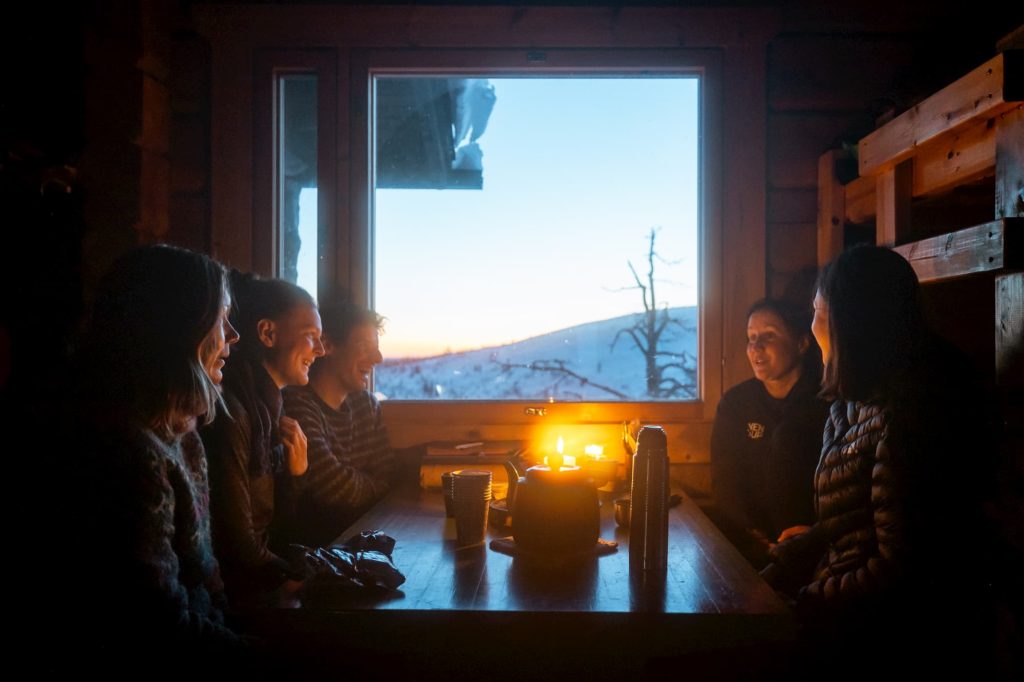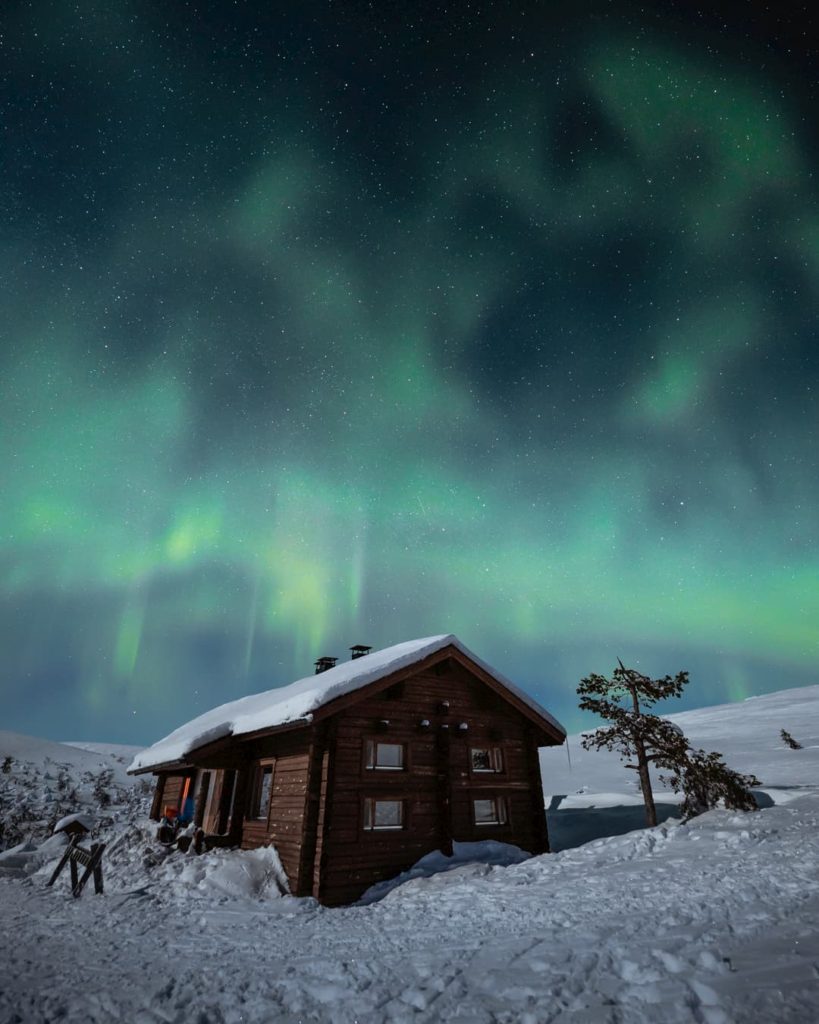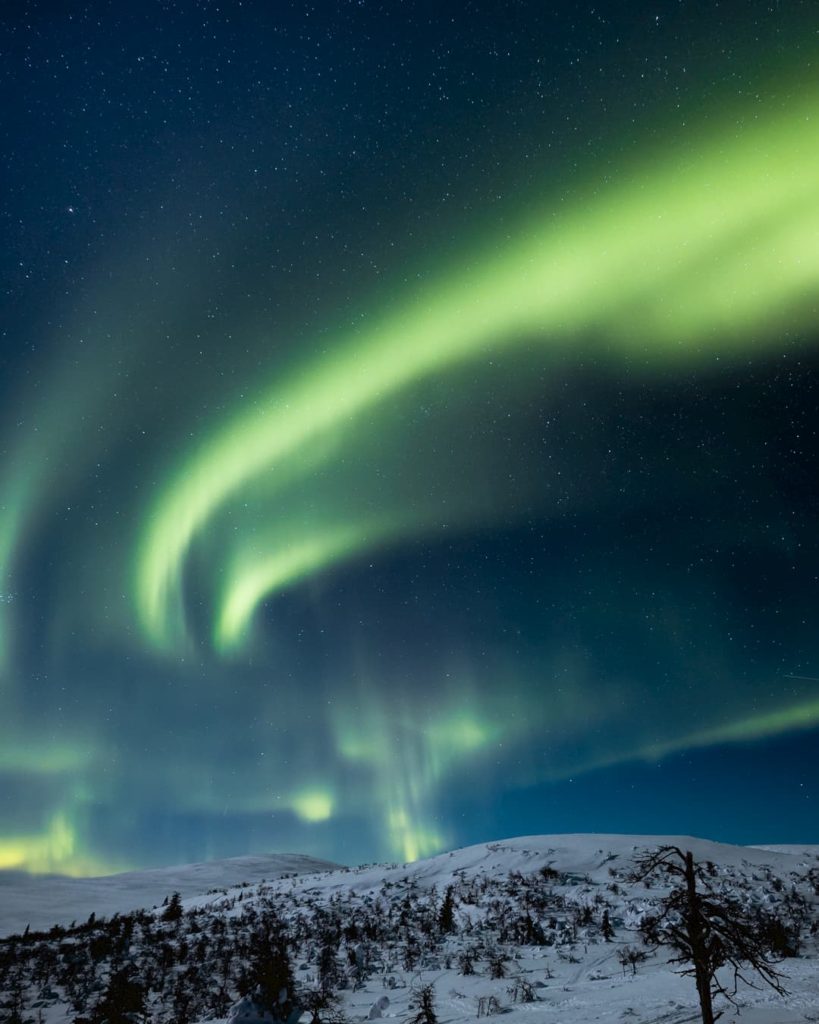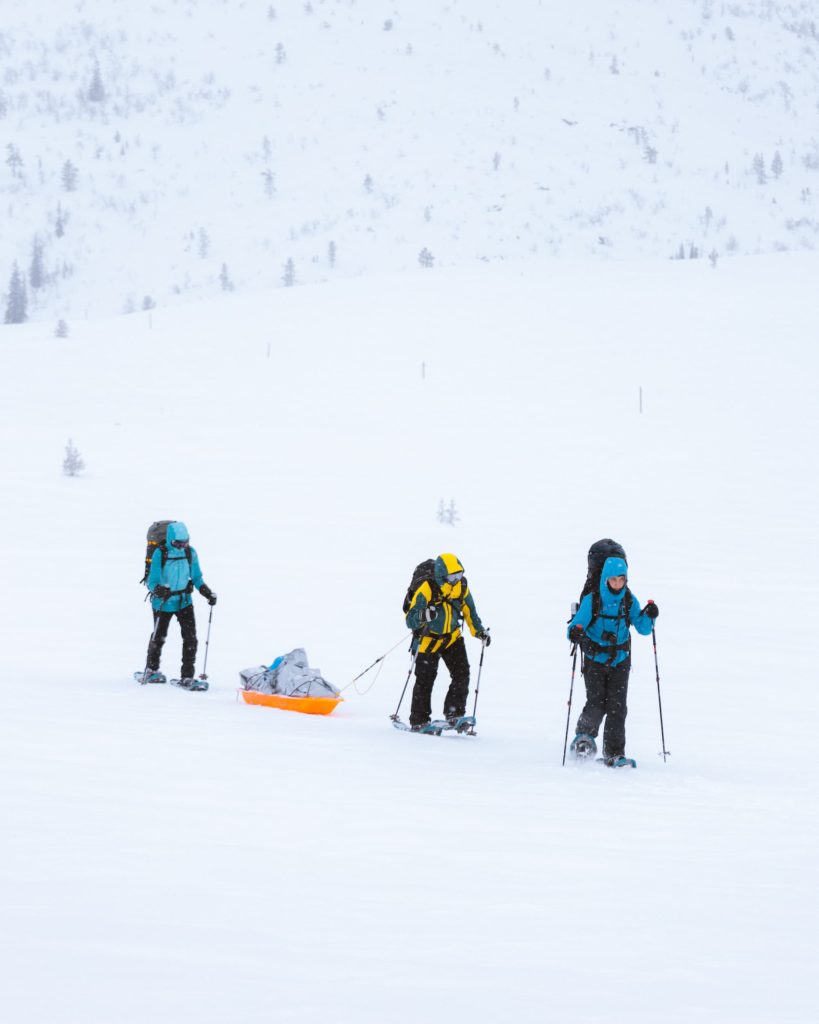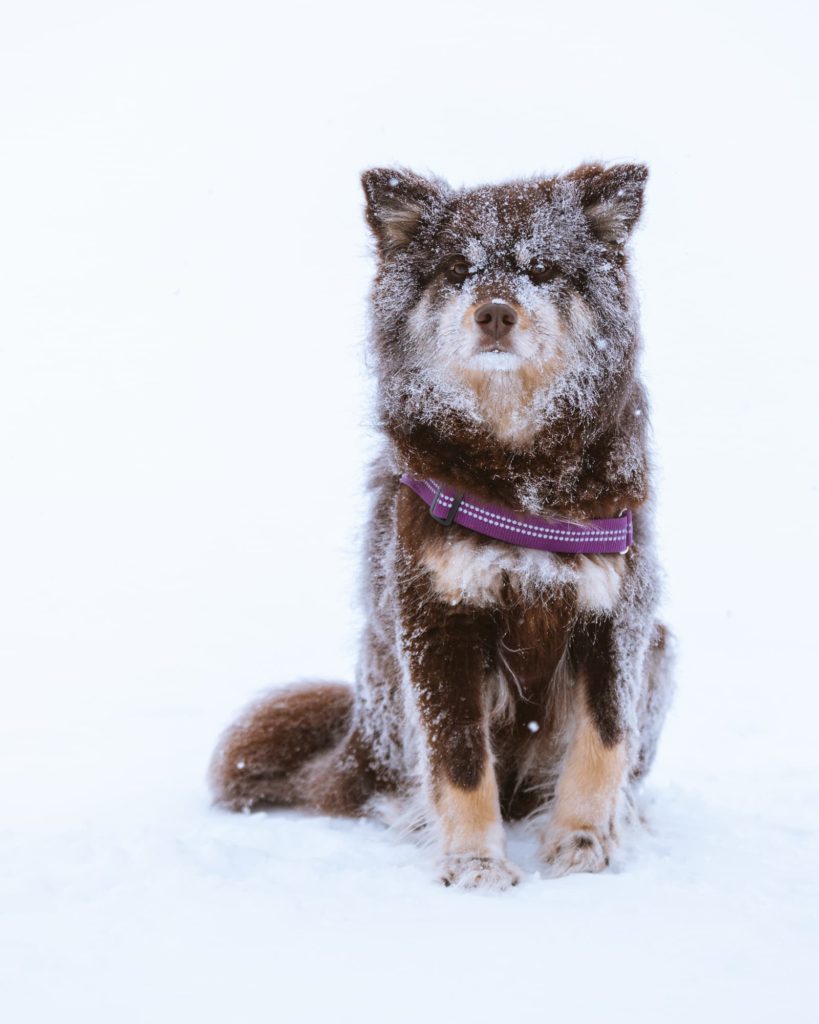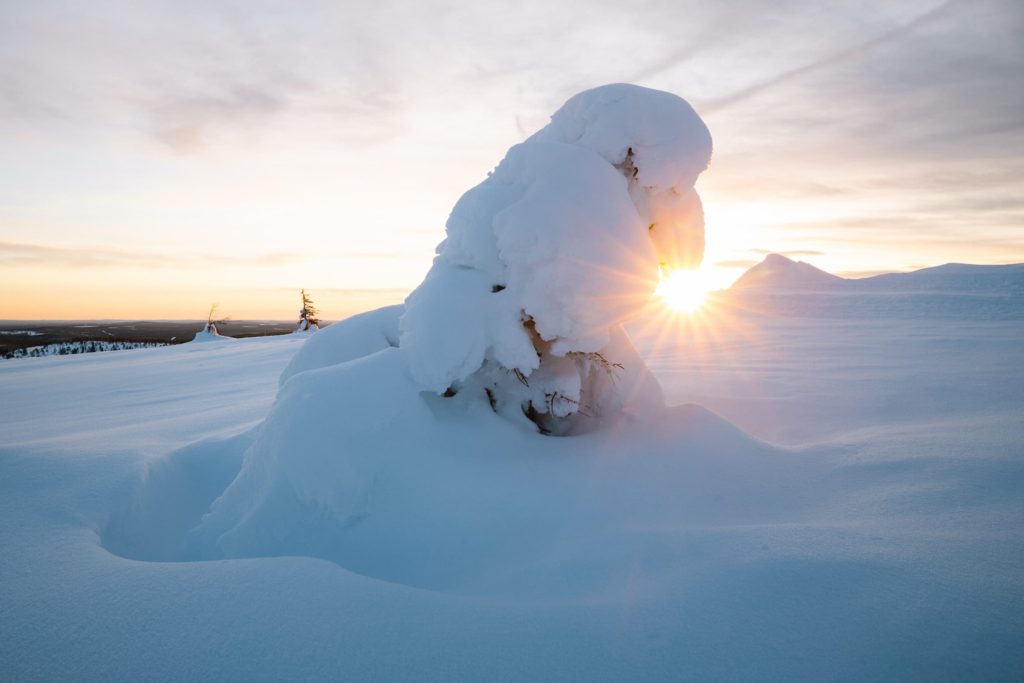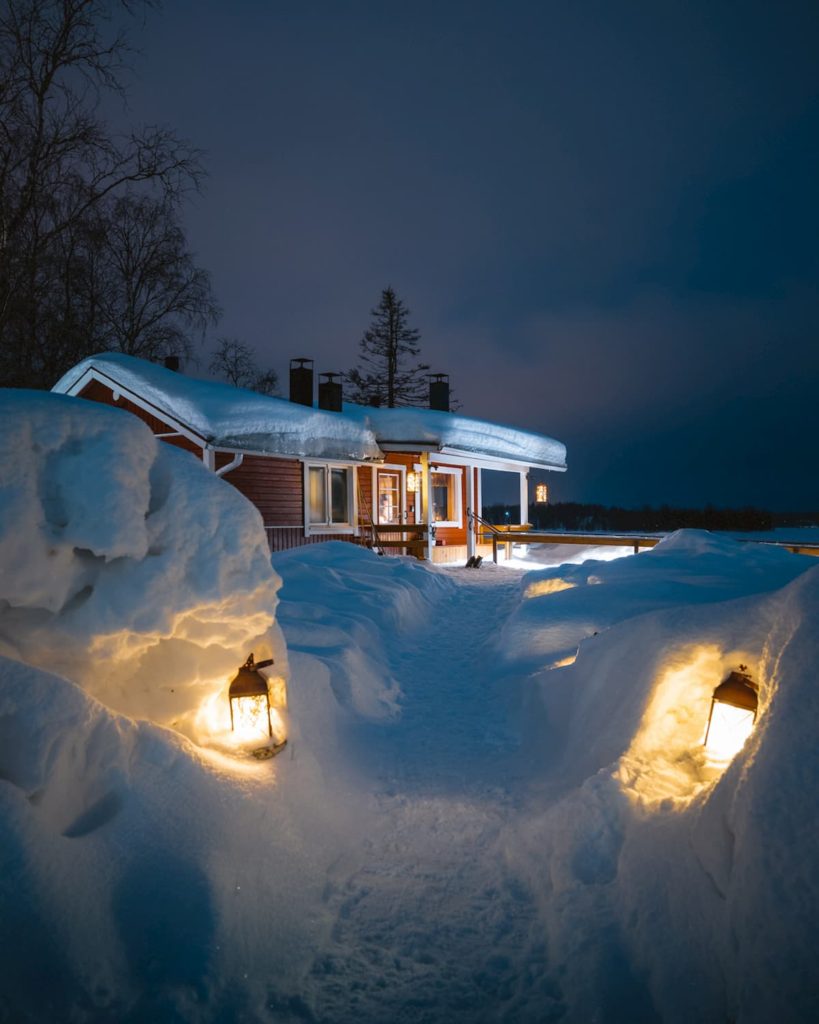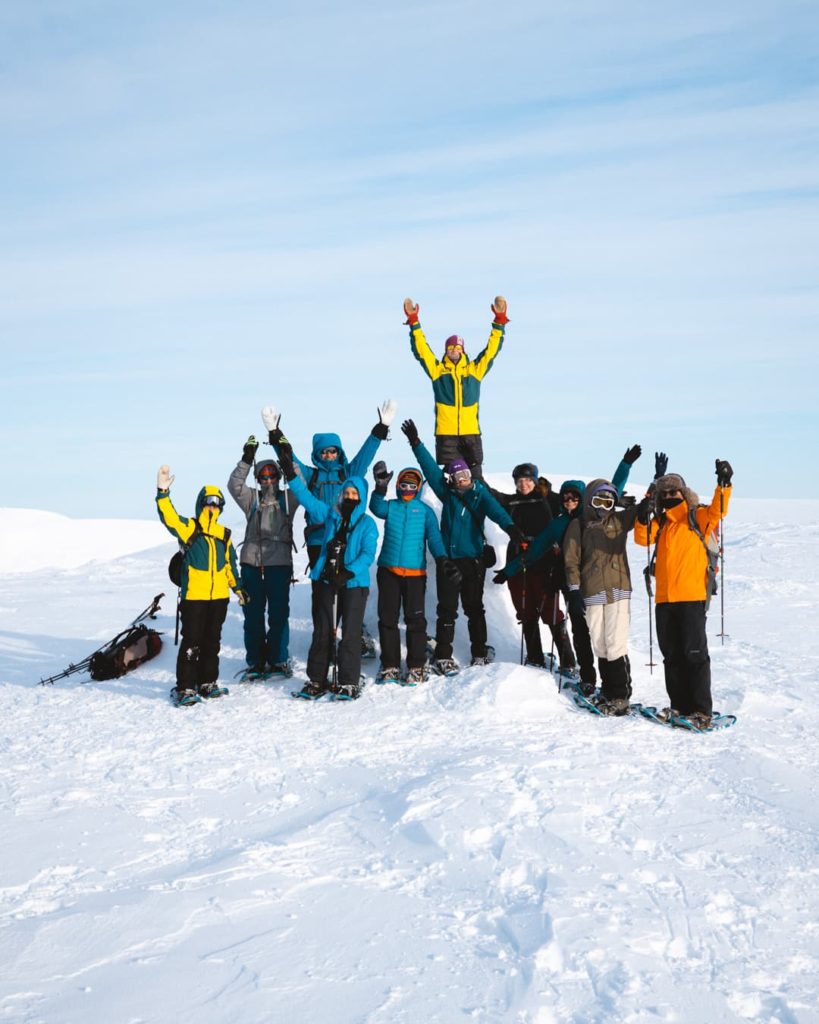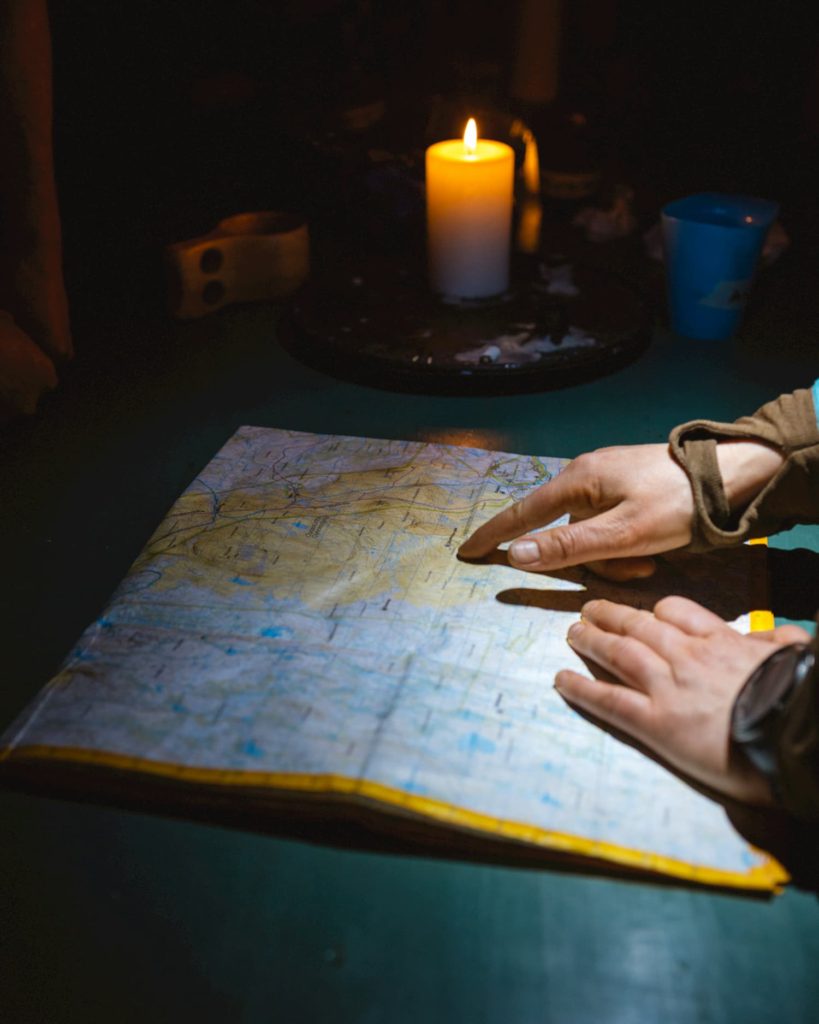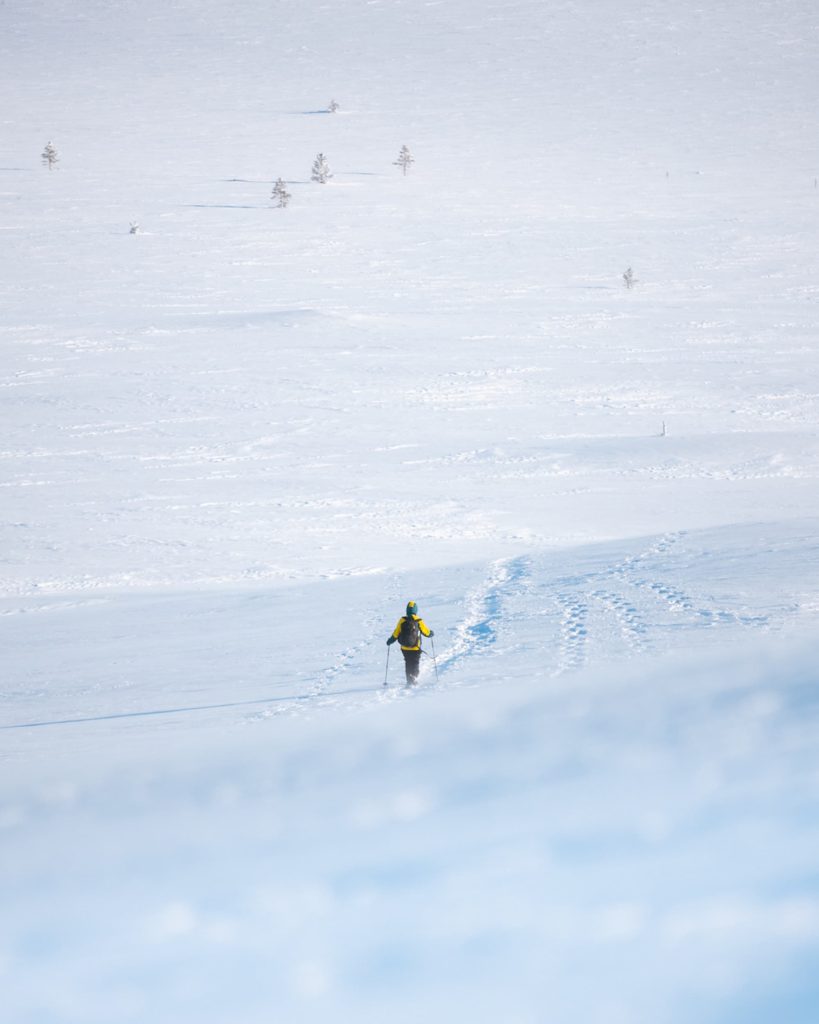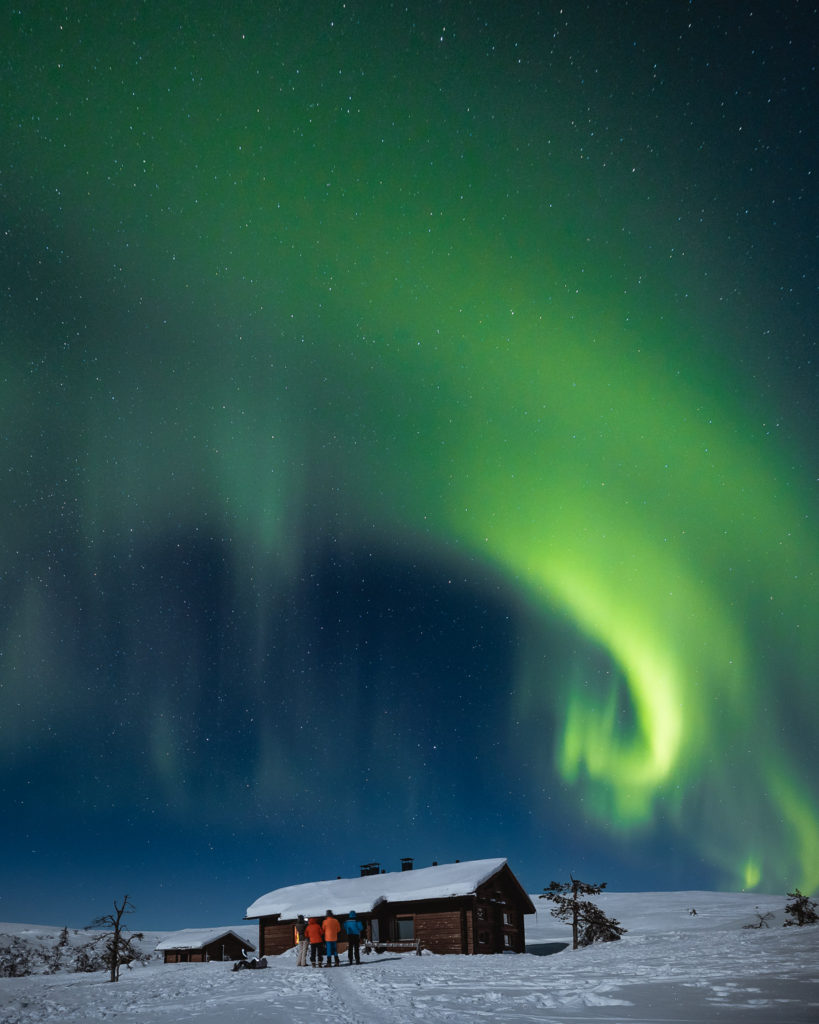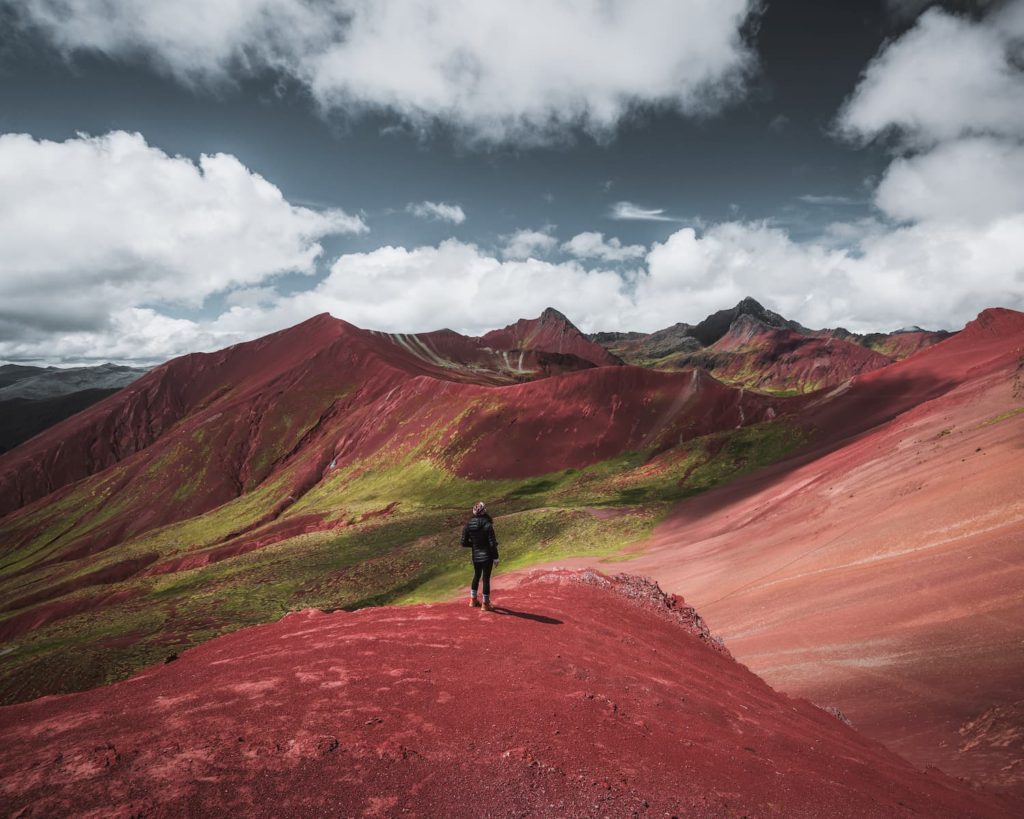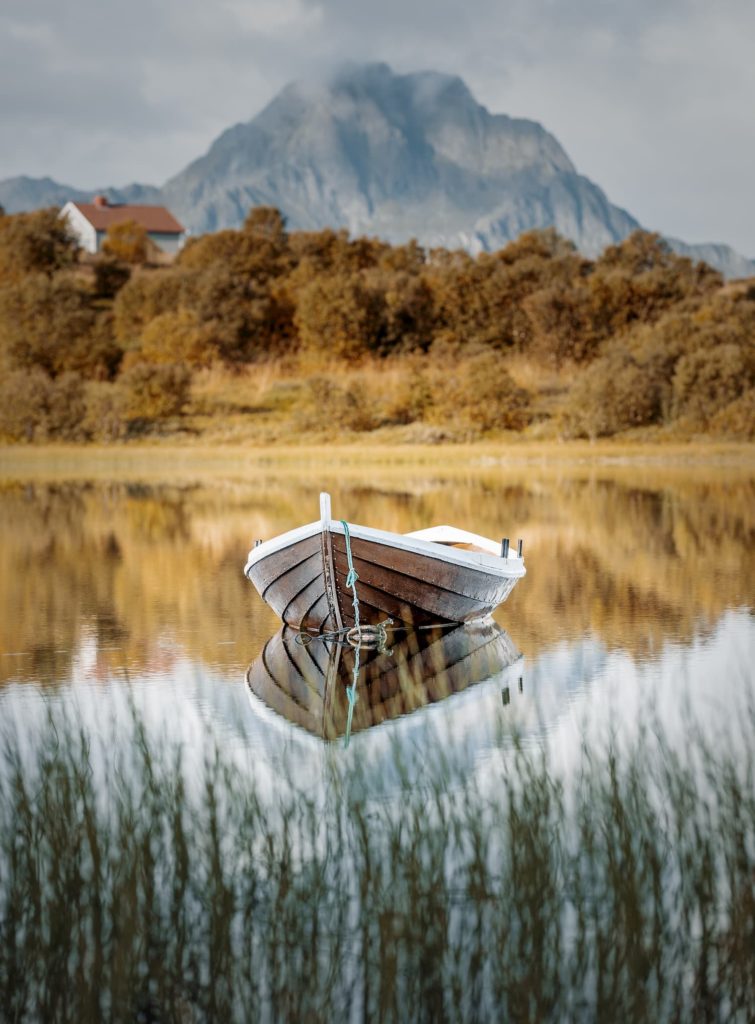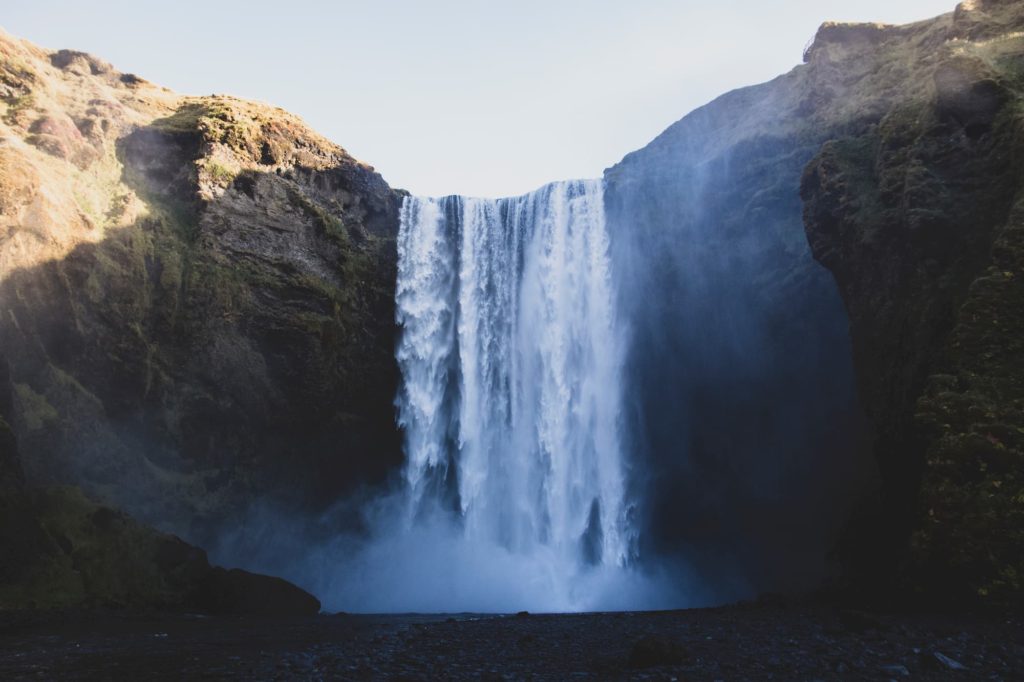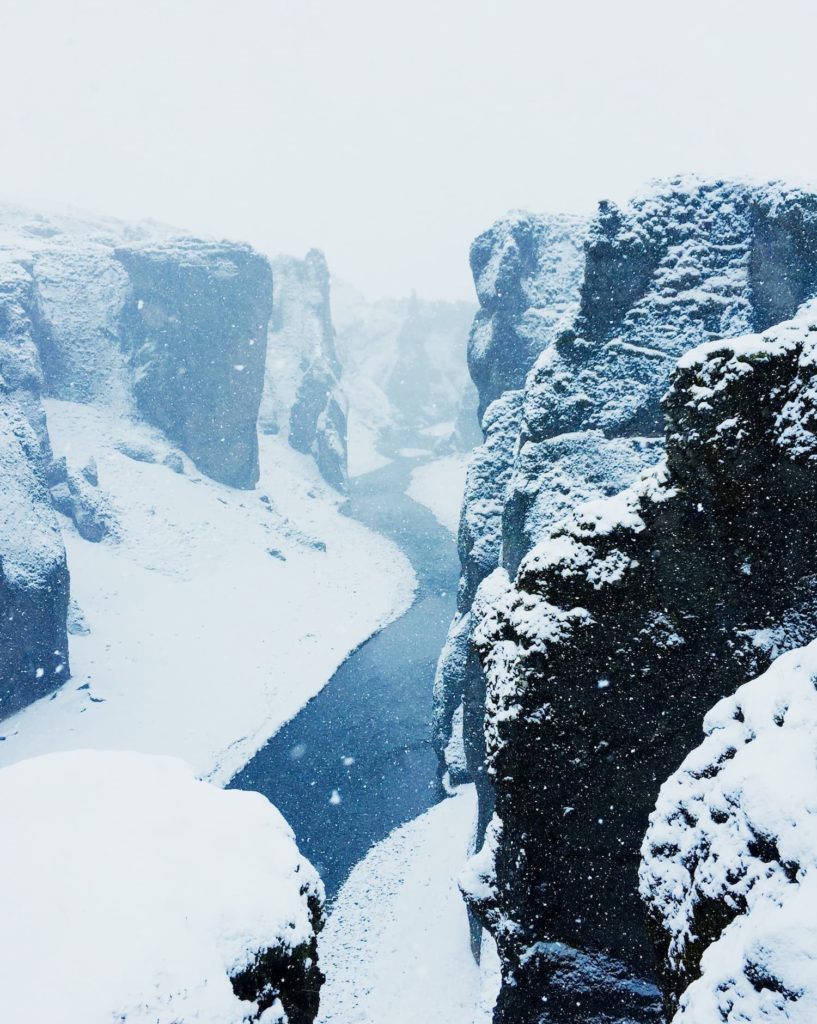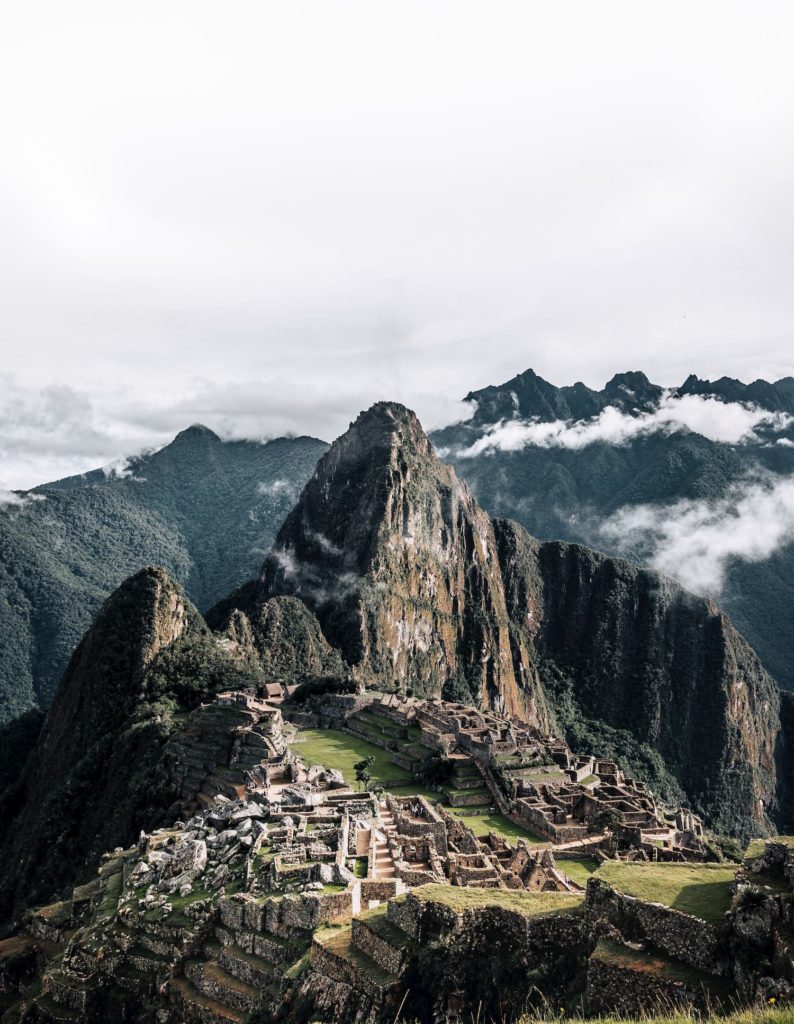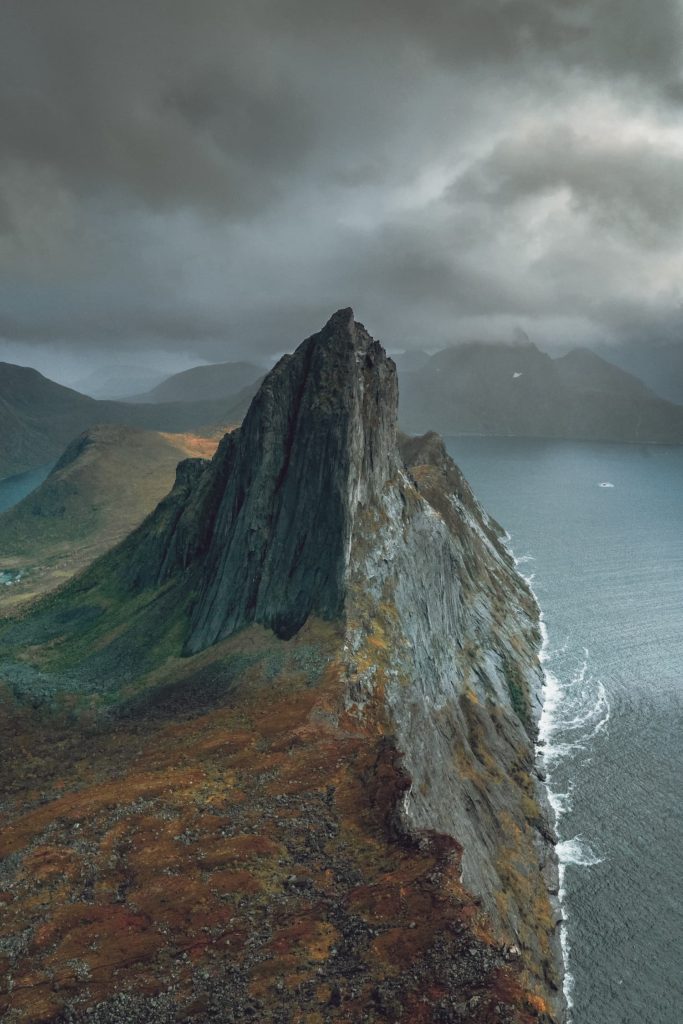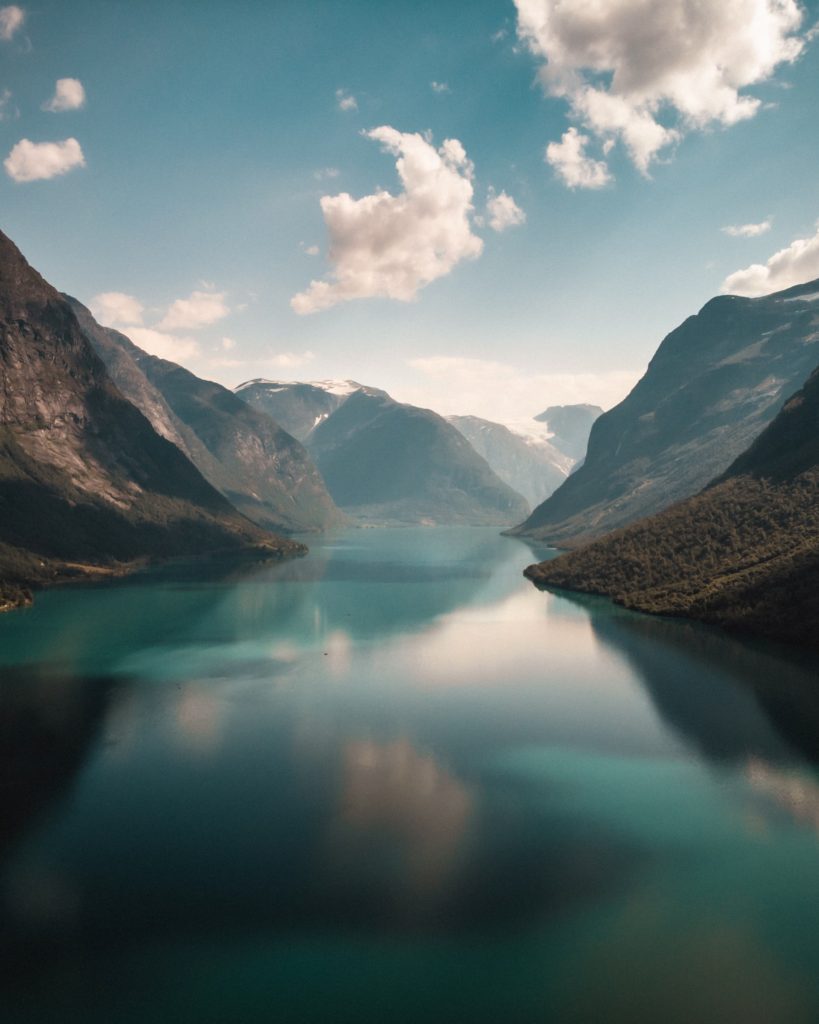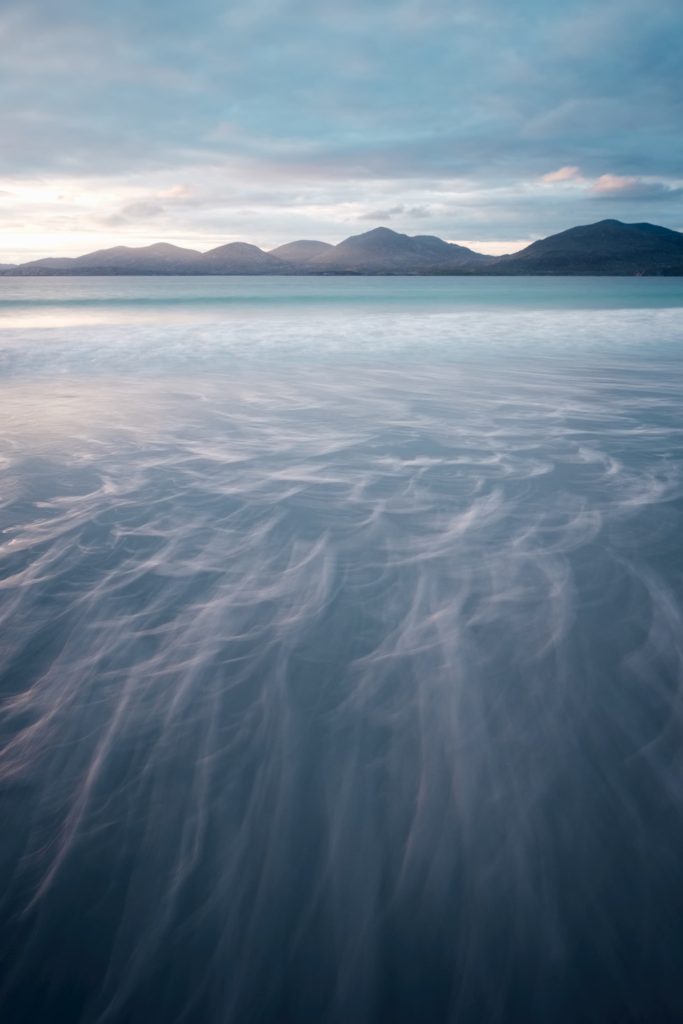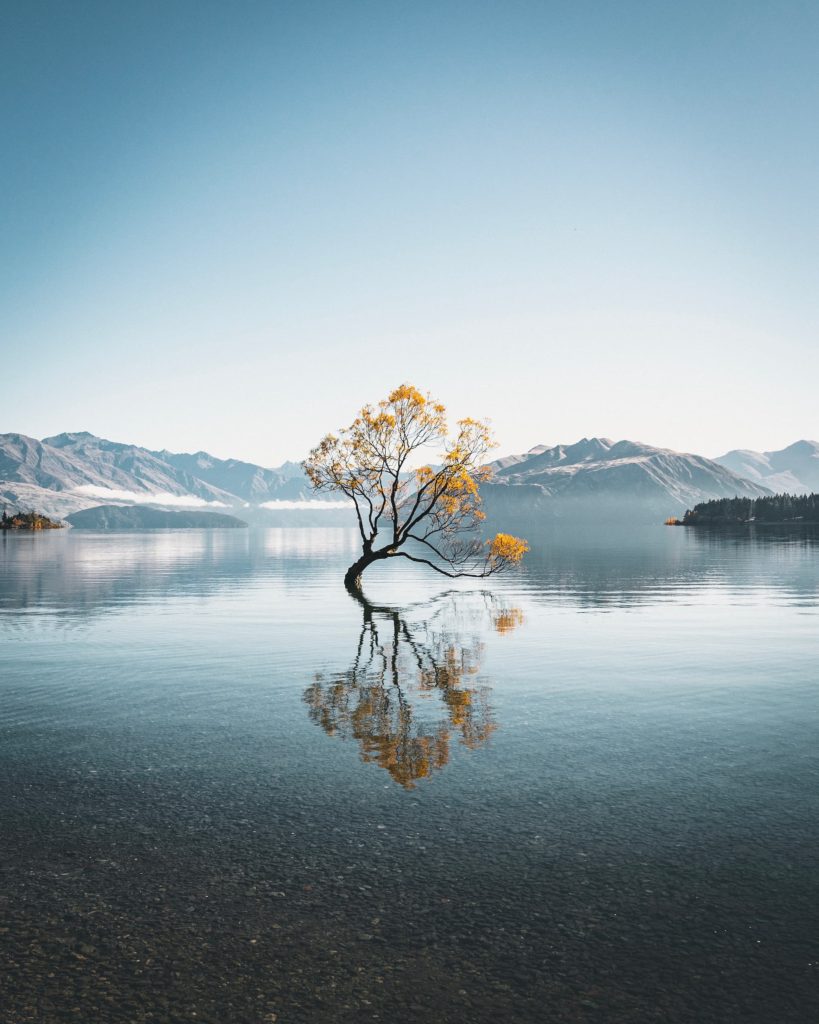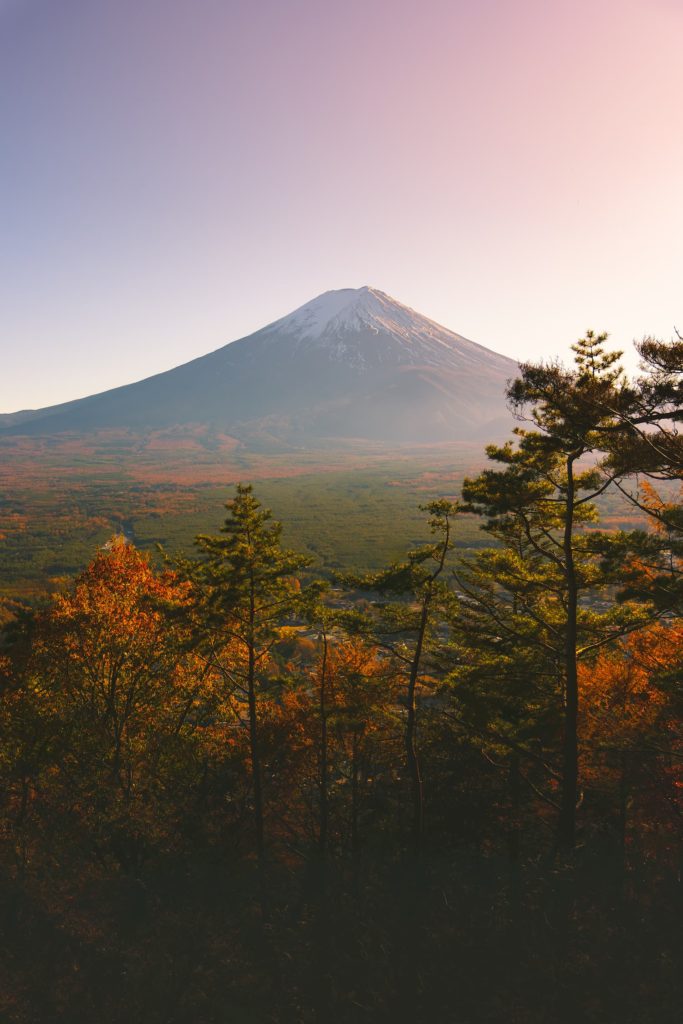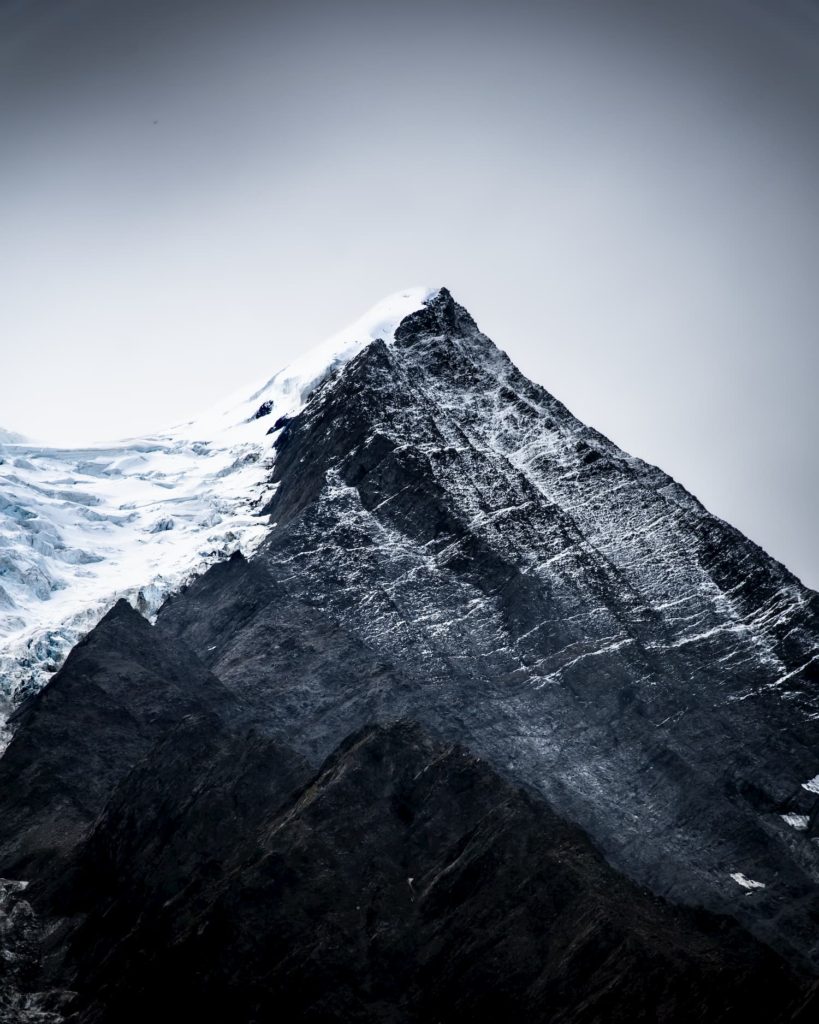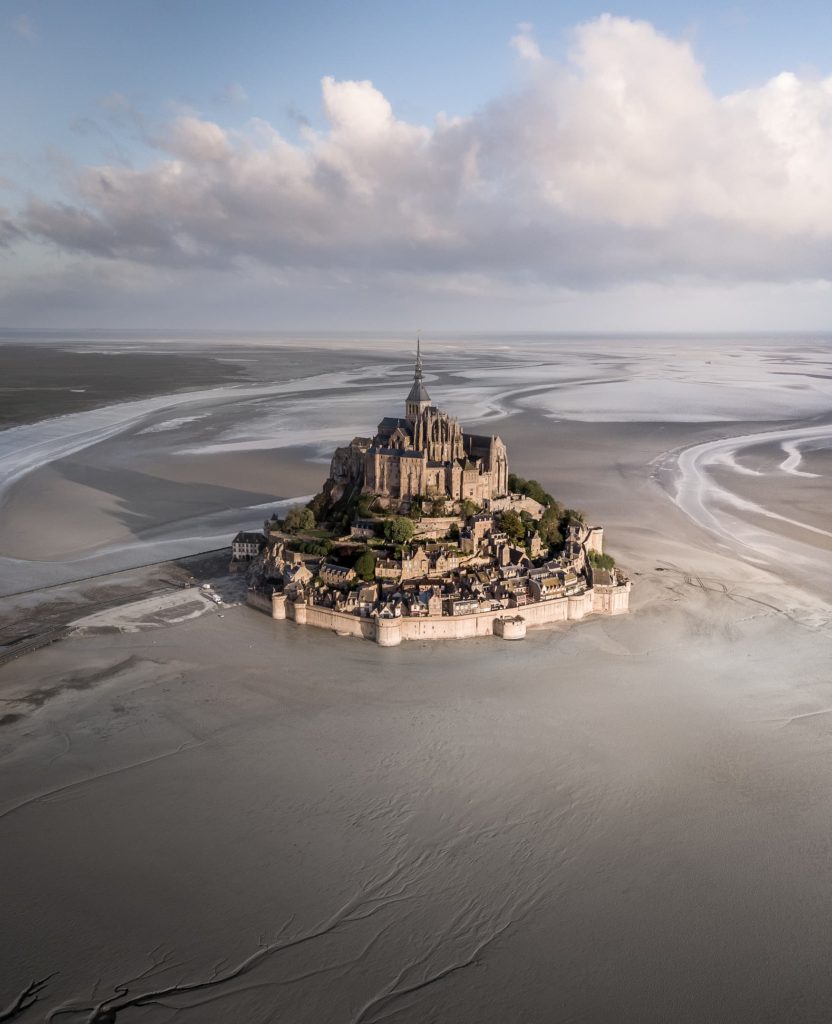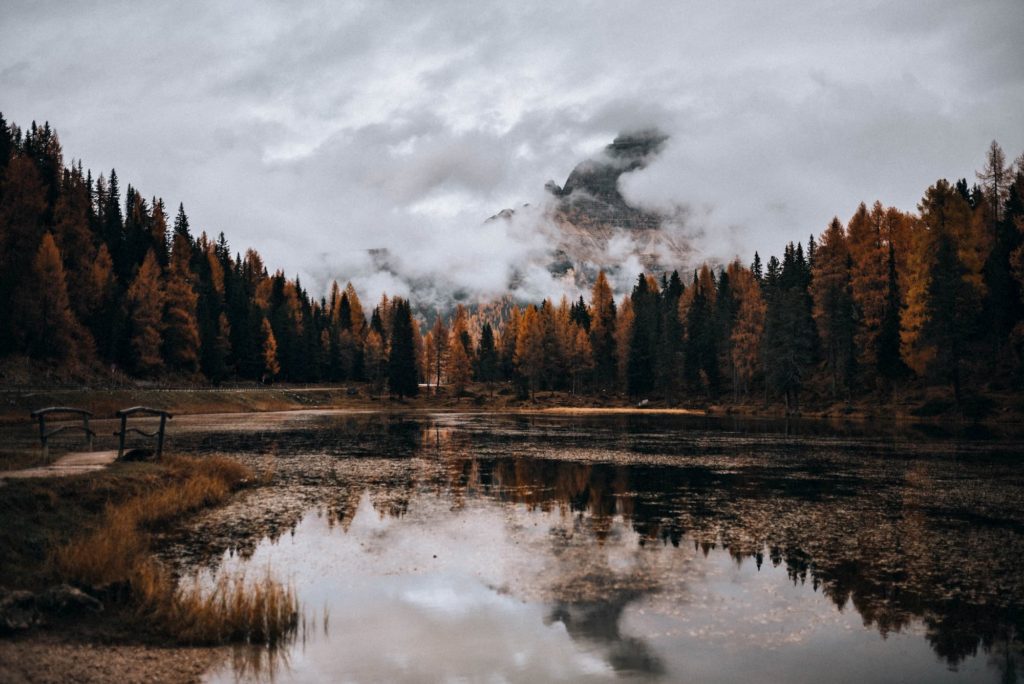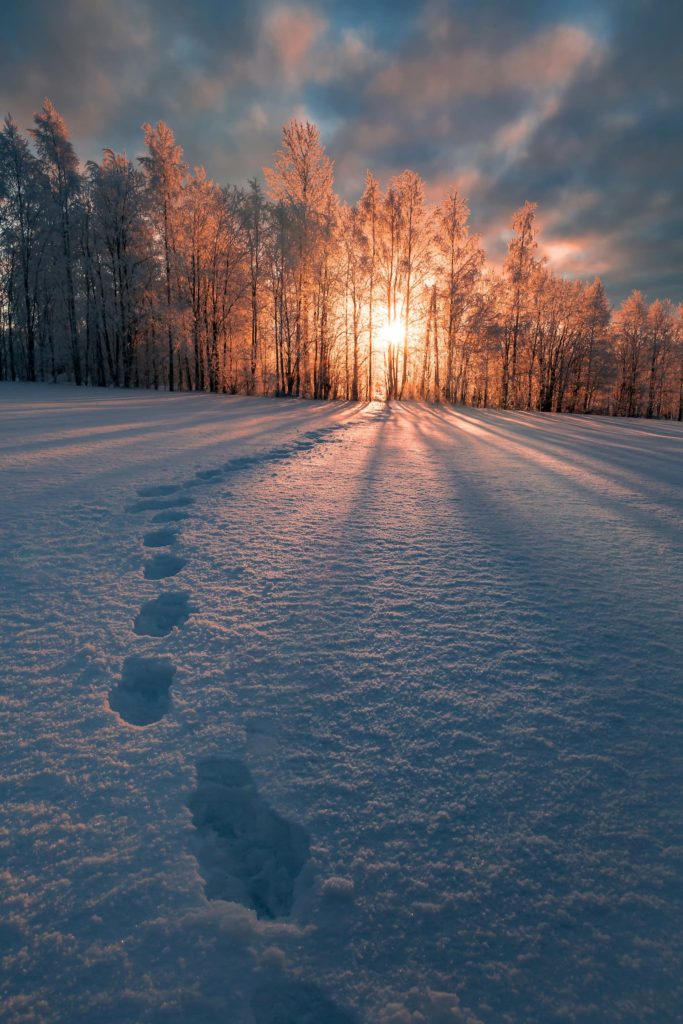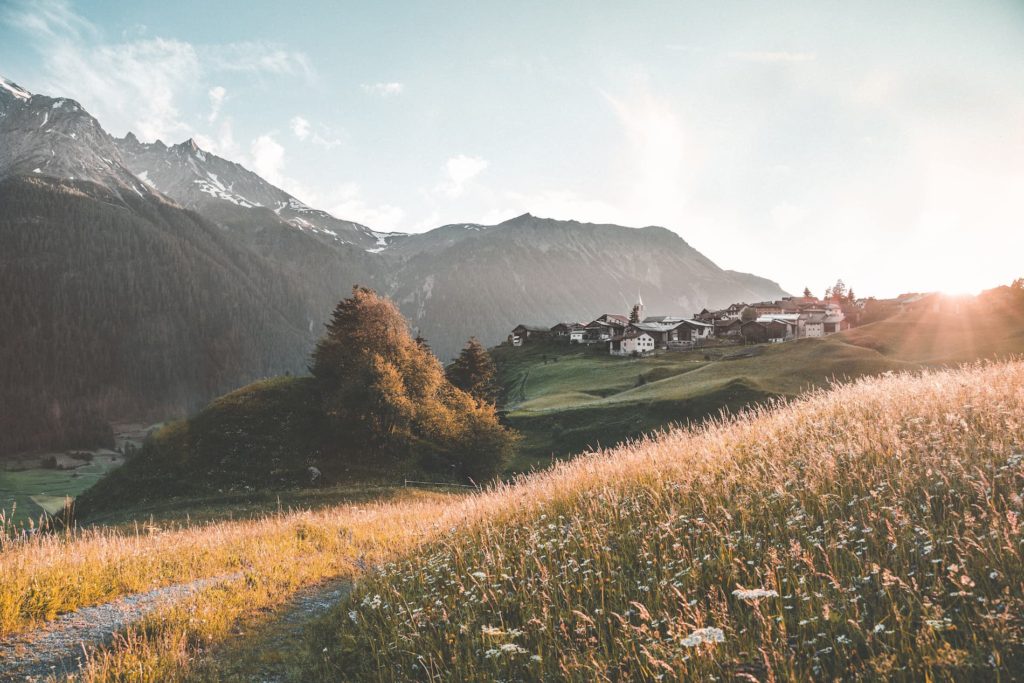
A Winter Trekking in Pallas-Yllästunturi National Park (Finland)
Lapland is a winter wonderland for photographers and winter-sport enthusiasts. In this article, I want to share with you my incredible expedition with Seven Fells Up to discover pristine snowy forests, breathtaking northern lights, and wooden cabins in one of the most remote and scenographic territories I’ve ever explored.
Destination:
Pallas-Yllästunturi National Park
A few years ago, I glimpsed a turquoise glow in the Icelandic sky. It was just a faded imitation of the explosive northern lights pictures I had seen, but ever since I’ve dreamed of witnessing the most sparkling natural phenomenon on Earth in all its glory by traveling to the Great North. Lapland seemed to be the ultimate destination to fulfill this desire. I usually don’t like chasing random tourist attractions, preferring to live the authentic experiences that locals use to have. A hut-to-hut trekking experience off the beaten path in one of the most untouched areas of the region was what I was looking for.
"The remote location offers dark skies, the ideal condition for seeing the Aurora Borealis, and the chance to experience exciting outdoor activities at the same time!"
I reached out to Seven Fells Up, a tour operator who has been offering various types of winter adventures for years. The seven fells (which in Finnish are called ‘tunturi’) are the fells surrounding Äkäslompolo, a small village in the Ylläs area where the agency is based, in northern Finnish Lapland. An endless sequence of pristine forests and shimmering lagoons that, from October to May, turns into an authentic winter wonderland for photographers and outdoor enthusiasts. Seven Fells Up offers snowshoeing trips, cross-country tours, northern lights hunts, and multi-day trekkings in the wilderness.
"I decided to join the 5-day snowshoe trek in Pallas-Yllästunturi National Park, the third-largest of Finland."
The Magic of Light in Frozen Taiga
I landed in Äkäslompolo on a Saturday evening, late February, and spent the first night in a cozy hotel right in the middle of Pallas National Park together with the Seven Fells Up’s crew. During the team briefing with my adventure companions, I met our two Lapland guides, Päivi and Kirsi, and our Lapland shepherd mascot Niitu. The next morning, two vans dropped us right at the starting point of one of the several trails that get deeply into the taiga (a boreal forest) for hundreds of km. For the next five days, we venture into unspoiled forests, frozen lakes and snowy hills. In my life I’ve spent a lot of time wandering through the Alpine woodlands, getting familiar with any kind of tree, but I never expected to feel so amazed once roaming through the taiga.
"The boreal sunlight filtering through snow-covered firs, pines, and silver birches creates a truly magical atmosphere, especially in the morning when the sun is low."
Most of the time during the trek I ended up being the group tail as I was often delayed by a particularly suggestive sunbeam that I wanted to photograph. By the end of the afternoon we would arrive, tired but satisfied, at a cozy lodge to spend the night. One of the lodges, Hannukuru, was located by a lake in the middle of the forest, while the other hut, Nammalakuru, was situated on a small clearing surrounded by the highest peaks in the whole park.
"Exciting daily hikes allowed us to climb several fells to contemplate the endless string of frosty trees dotted with white hills and get a real sense of the scale of the Arctic wastelands."
Lapland Tales around the Fireplace
We transported all of our food, sleeping bags, nightclothes, and other stuff into flashy orange sleds, the ‘pulka’. I expected dragging a sled would have been more strenuous, but once fastened to my waist, I hardly noticed it was slipping on the snow behind me. I was also impressed by the abundance of cabins and shelters that we encountered during our expedition. All of them have a big chimney right in the center used for drying clothes, heating up a hot beverage or roasting a sausage on the embers. Our night lodges had comfortable bunk beds and a lot of wood stacked and ready to be burned into the big fireplace.
"In no time the polar cold was locked up outside, and the cabin turned into the perfect place to chill while listening to our guides telling old Lapland stories, and filling our bellies with Lappish specialties."
Local cuisine is tasty and straightforward, excellent to be cooked on a small stove in the middle of the forest. Salmon soup, reindeer stew, mashed potatoes, and blueberries jam satisfied our hunger after having spent the whole day dragging a sled in the outdoor. The few times that we left something in our plate, Niitu took care of making the leftovers disappear!
Chasing the Northern Lights
During the first four trekking days the weather gave us a bright sun, which made staying outdoors during the warmest hours of the day quite pleasant (average temperature was around 5-10°C at noon!). So far thought, the northern lights had not been so willing to be seen. On the last night, when some of us were already snoring, one Swiss girl suddenly broke into the lodge: “come outside, something in the sky started to shimmer!”. I’d been prepared for that moment for a long time; in a few seconds I had already rushed out, put gloves on my hands, and mounted the camera on the tripod, ready to capture those greenish lights dancing above us.
"For those not used to it (that is, anyone not living close to the Arctic Circle), seeing the northern lights for the first time conveys extraordinary, almost ancestral emotions."
On the next day, we made the last long climb to our final destination in a complete whiteout, with small snowflakes sticking to our hat and just a few dozens of meters visibility. The perfect conditions for capturing some minimalistic images, with Niitu acting like a model while rolling around in the snow and chasing undisclosed noises in the mist. After having spent five days in this remote wilderness, far away from civilization, being back to an urbanized area has been kind of weird. The noise of car engines, even in a small village like Äkäslompolo, was more annoying than usual, and the luxurious-looking dishes we get at the restaurant were not that tasty compared to a reindeer sandwich heated on the bonfire in the middle of the forest.
Sculptured trees and cozy saunas
I spent a few more days exploring Äkäslompolo area, which offers several opportunities to landscape photographers and winter sports fans. I attended a reindeer race, had a sauna on the shore of a frozen lake, and plunged in its icy waters when the heat became unbearable. I photographed some legendary trees sculpted by a thick cover of snow, and spent the nights scanning the sky hoping for another northern lights show that never took place. However, I am happy for everything I’ve seen and photographed during my trip in this remote territory.
I hope this article was a helpful starting point for planning your Lapland adventure. If you want to experience this incredible wilderness tour as well, you’ll find the link to get in touch with Seven Fells Up and some other useful information on how to best organize your trip to Ylläs region below. Personally I’m also looking forward to my the next adventure to the Great North, but until then… Moi Moi Lappi!
Trekking Stats
• Total hiking distance: 50+ km
• Nights spent in the wilderness: 4
• Experienced temperature range: +5/-20 °C
• Daylight: 7.30 am – 17.30 pm on March 1st
• Total northern lights duration: 5 minutes
Need to Know Before Leaving
• Äkäslompolo closest airport is located in Kittilä, around 50 km away.
• Don’t forget nobody can plan the weather or the northern lights, but quiet and wilderness are always guaranteed in Pallas National Park.
• Even when the temperatures drop way beyond 0°C, the Lapland cold is quite dry and doesn’t penetrate that much. Nevertheless, you’d better pack warm thermal layers, a heavy down jacket, and of course scarf, hat, and gloves.
• The cabins where we slept were definitely cozy but, of course, they lack electricity. Bring over a capable power bank if you want to charge your phone and other gear during the trekking.
• The photography equipment I used during this adventure: Canon EOS R, Canon RF 15-35 f2.8L, Canon EF 70-200 f4L, Peak Design carbon fiber travel tripod.
Useful links
• If you want to experience Lapland at its best, you can book your adventure with Seven Fells Up here.
Would you like content like this sent to your inbox?
MUST READ STORIES OF APRIL
MUST READ STORIES OF MARCH
MUST READ STORIES OF FEBRUARY
MUST READ STORIES OF JANUARY
NOMADICT
ART GALLERY
THE LATEST STORIES
WRITEN WITH PASSION TO INSPIRE YOU

Photo tour in Azores, Portugal
Join us in the Azores for a unique photo tour, where you’ll elevate your creative skills with expert guidance from Ronald Soethje, Bruno Ázera, and Nomadict.

Forest Kai (@forest1kai): Photographer based in the US
In this article, Forest shares how years of chasing scale, silence, and raw landscapes shaped his approach to photography, from the deserts of Kazakhstan to the volcanic ridges of Iceland. He talks about how he uses light, texture, and vast negative space to create images that feel both intimate and overwhelming.

Simon Hechtbauer (@roamwithsimon): Best of the Week 32 at #nomadict
Simon shares the journey behind his photography, from early inspirations to field techniques, editing, and the story of the winning shot that shaped his path.

Miroslav Maršík (@miromarsik): Photographer based in Czech Republic
In this article, Miro shares how his love for cinematic music evolved into a deep passion for photography and how he uses light, color, and atmosphere to turn the streets of Prague into living film scenes.

Aurora photography panorama workflow: A guide to camera settings, editing, and color
In this article, Stefanie reveals how her background in physics sparked her passion for astrophotography and how she blends science with creativity to capture the beauty of the night sky. Readers will discover her approach to color, contrast, and editing, as well as her aurora photography workflow.

Yhabril (@yhabril): Best of the Week 33 at #nomadict
Spanish photographer Yhabril captures the profound connection between humans and the mountains that shaped him. Growing up in the Pyrenees, his work bridges outdoor sports, landscapes, and celestial scenes — often blending athletes, moonlight, and wilderness into striking visual stories.

Ariane Totzke (@besondersschwierig): Photographer based in Switzerland
In this article, Ariane shares how photography helped her navigate personal challenges, connect authentically with people and animals, and develop a philosophy rooted in empathy and artistic freedom. Readers will also discover her ethical approach to wildlife photography and her trusted equipment for both camouflage techniques and cameras.
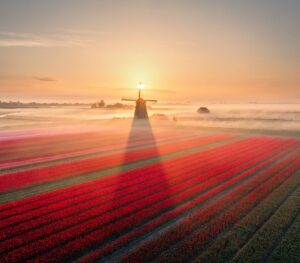
How to photograph Dutch tulip fields: A guide to light, gear, composition, and colors
Discover how to photograph Dutch tulip fields in their most magical light. From choosing the right gear and lenses to mastering composition, color, and aerial perspectives, this guide shares creative techniques to capture the beauty of the Netherlands’ tulips. Learn how light, color grading, and proportion bring emotion into every frame.
